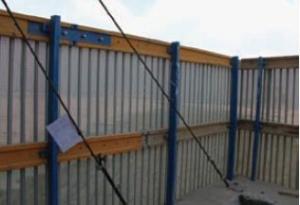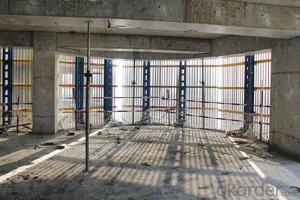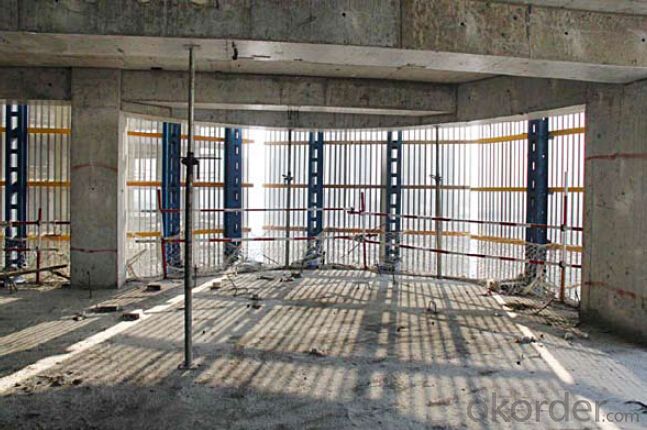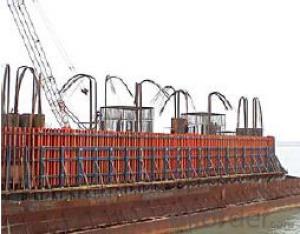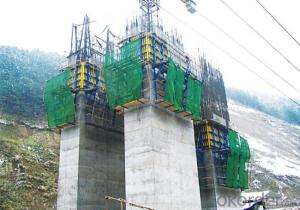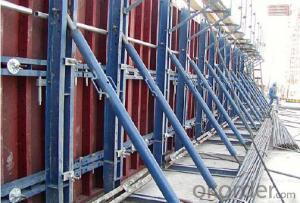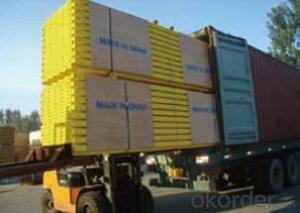Protection Platform for formwork and scaffolding system
- Loading Port:
- Tianjin
- Payment Terms:
- TT OR LC
- Min Order Qty:
- 50 m²
- Supply Capability:
- 1000 m²/month
OKorder Service Pledge
OKorder Financial Service
You Might Also Like
Protection Platform PP-50
A kind of new type construction protection system, applying operating platform and safer job
location for construction corps.
Characteristics:
◆ Easy and quick assembling.
◆ Lifted as a group, it is rapid and economic.
◆ Auto-climbing
◆ A safe and reliable anchor system
1. Composition
2. Assembly process of anchor system
(1) Embed V-climbing cone and anchor plate into the slab.
(2) Fix anchor shoe on the slab by tensile bolt.
(3) The fixed anchor shoe.
◆ High work efficiency with work platform and unload platform
◆ High light transmittance with the hollow block
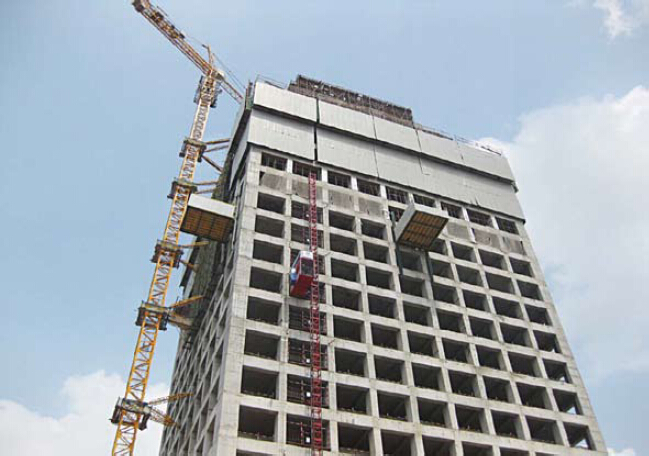
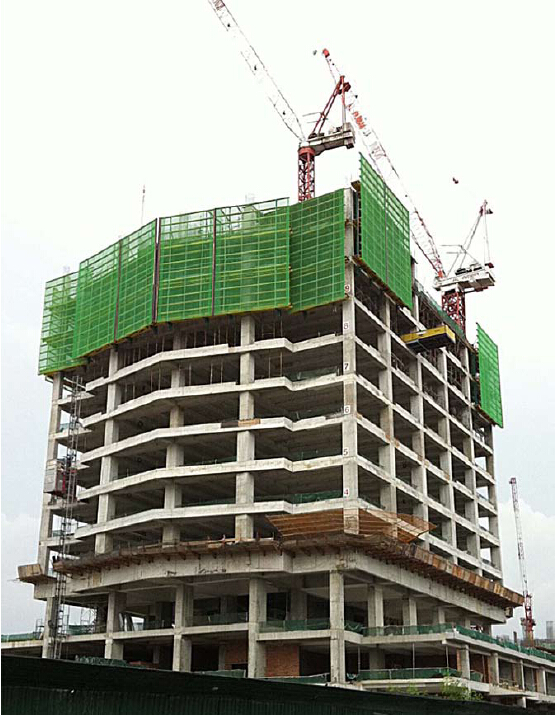
- Q: Can steel formwork be used for hotel construction projects?
- Yes, steel formwork can be used for hotel construction projects. Steel formwork is commonly used in construction due to its durability, strength, and versatility. It provides a sturdy and reliable framework for pouring concrete and can be easily assembled and dismantled, making it suitable for various construction projects, including hotel buildings.
- Q: How does steel formwork contribute to the strength of the structure?
- Steel formwork contributes to the strength of a structure by providing a rigid framework that supports the concrete during the pouring and curing process. This ensures that the concrete is evenly distributed and properly shaped, resulting in a more durable and structurally sound building. The steel formwork also helps prevent any deformation or collapse of the structure under the weight and pressure of the concrete, ultimately enhancing its overall strength and stability.
- Q: Are there any environmental considerations when using steel formwork?
- Yes, there are several environmental considerations when using steel formwork in construction projects. Firstly, steel production is known to have a significant carbon footprint. The extraction and processing of raw materials for steel production, such as iron ore and coal, contribute to greenhouse gas emissions. Additionally, the manufacturing process itself requires a large amount of energy, further contributing to carbon emissions. Moreover, steel formwork systems often require a significant amount of transportation, which adds to the environmental impact. The transportation of heavy steel panels and other components can result in increased fuel consumption and emissions, especially if long distances are involved. Furthermore, steel formwork is typically non-renewable and non-recyclable. Once it reaches the end of its lifespan, it often ends up in landfills, contributing to waste accumulation and environmental pollution. However, it is worth noting that steel formwork has some environmental advantages when compared to other formwork materials. For example, steel formwork can be reused multiple times, reducing the need for new materials and minimizing waste generation. Its durability and strength also contribute to longer lifespan and less frequent replacements, reducing overall resource consumption. To mitigate the environmental impact of using steel formwork, various measures can be taken. These include optimizing transportation routes to reduce fuel consumption, implementing energy-efficient manufacturing processes, and promoting the recycling of steel formwork components at the end of their life. Additionally, exploring alternative formwork materials such as recycled or sustainable materials can also help reduce environmental considerations associated with steel formwork usage.
- Q: Can steel formwork be used for both simple and complex architectural designs?
- Yes, steel formwork can be used for both simple and complex architectural designs. Steel formwork is highly versatile and can be shaped and customized to various shapes and sizes, making it suitable for both simple and complex architectural designs. It offers a high level of flexibility and can be easily adjusted to create intricate and unique forms. Additionally, steel formwork provides excellent strength and stability, allowing it to withstand the pressures and forces exerted during the concrete pouring process. This makes it ideal for constructing structures with complex shapes and designs. Furthermore, steel formwork is durable and reusable, which makes it cost-effective for projects involving both simple and complex architectural designs. Overall, steel formwork is a reliable and efficient solution that can be used in a wide range of architectural designs, regardless of their complexity.
- Q: Types of building templates? What is clear water template?
- Steel template: in addition to the combination of steel templates, has developed a wide steel template, all steel large formwork, light steel mold, 63 steel frame steel template. The high cost of steel mold, in addition to large projects such as bridges or other buildings, nuclear power plants, reservoirs and other construction sites, has been replaced by building wooden template.
- Q: How does steel formwork affect the overall project budget?
- Steel formwork can have a significant impact on the overall project budget. While steel formwork may have a higher initial cost compared to other types of formwork, such as timber or plywood, it offers several advantages that can ultimately lead to cost savings. One of the main advantages of steel formwork is its durability. Steel is a strong and long-lasting material, capable of withstanding the wear and tear of multiple uses. This means that steel formwork can be reused for numerous projects, reducing the need for frequent replacements and lowering costs in the long run. Furthermore, steel formwork allows for faster construction times. Its robustness and stability enable contractors to pour concrete at a faster rate, reducing labor costs and streamlining the construction process. Additionally, steel formwork can be easily assembled and disassembled, resulting in quicker turnaround times between projects. In terms of quality, steel formwork ensures a high level of precision and consistency in concrete structures. This can minimize the need for rework and corrections, thus reducing costs associated with fixing errors or imperfections. Moreover, steel formwork offers flexibility in design. It can be customized to fit various shapes and sizes, allowing for greater architectural freedom and creativity. This versatility can contribute to cost savings by eliminating the need for expensive and complex modifications to the formwork system. Finally, steel formwork is known for its resistance to moisture and weather conditions. Unlike timber or plywood, steel does not warp or deteriorate when exposed to moisture, which can result in cost savings by avoiding replacements or repairs due to water damage. In summary, while steel formwork may have a higher initial cost, its durability, reusability, speed, precision, flexibility, and resistance to environmental factors can lead to overall cost savings throughout the project. By considering the long-term benefits and efficiencies offered by steel formwork, project budgets can be effectively managed and optimized.
- Q: Is steel formwork more environmentally friendly than other types of formwork?
- There is no definitive answer to whether steel formwork is more environmentally friendly than other types of formwork as it depends on various factors. While steel formwork requires a significant amount of energy to produce, it is highly durable and reusable, which reduces waste over time. On the other hand, materials like wood or bamboo formwork are renewable and biodegradable, but may need to be replaced more frequently. Ultimately, the environmental impact of formwork depends on the specific context and considerations of the project.
- Q: How does steel formwork affect the overall accuracy of concrete structures?
- The accuracy of concrete structures can be significantly improved through the use of steel formwork. By providing precise alignment and dimensional accuracy, steel formwork ensures a more uniform and accurate structure. To maintain the desired shape and dimensions of the concrete during pouring and curing, steel formwork offers a rigid and stable framework. This stability prevents any potential deformation or distortion, ensuring that the final structure adheres to its design specifications. Additionally, steel formwork contributes to a smoother surface finish of the concrete. The smoothness of the formwork surface reduces the likelihood of imperfections or irregularities in the final structure, ultimately enhancing its aesthetics and overall quality. Moreover, steel formwork allows for greater control and precision in the placement and positioning of reinforcement bars, which are crucial for the structural integrity of the concrete. Accurate placement of reinforcement bars guarantees proper embedding within the concrete, resulting in a stronger and more durable structure. Furthermore, the high level of reusability provided by steel formwork further enhances accuracy. Its durability allows for multiple uses, minimizing the risk of wear and tear that could affect the formwork's alignment and accuracy. In conclusion, steel formwork plays a vital role in ensuring the overall accuracy of concrete structures. It provides stability, precise alignment, smooth formwork surfaces, and reusability, all of which contribute to a more accurate and aesthetically pleasing final product.
- Q: How does steel formwork handle formwork stripping and demolding?
- Steel formwork is designed to handle formwork stripping and demolding efficiently. The rigid and durable nature of steel allows for easy removal of the formwork after the concrete has cured. Steel formwork systems typically incorporate quick-release mechanisms such as pins or clamps, making the stripping process relatively straightforward. Additionally, steel's smooth surface prevents concrete from adhering to it, further facilitating demolding. With proper handling and maintenance, steel formwork can be repeatedly used for multiple construction projects, ensuring cost-effectiveness and productivity.
- Q: Can steel formwork be easily transported to different construction sites?
- Steel formwork can be conveniently transported to different construction sites. It is renowned for its robustness and resilience, enabling it to withstand transportation without suffering any notable harm. Moreover, steel formwork can be effortlessly disassembled and reassembled, rendering it highly portable. This characteristic empowers construction companies to reuse the formwork at multiple locations, minimizing the necessity for fresh materials and resulting in cost savings. The adaptability and ease of transportation of steel formwork make it a favored option among contractors for diverse construction endeavors.
Send your message to us
Protection Platform for formwork and scaffolding system
- Loading Port:
- Tianjin
- Payment Terms:
- TT OR LC
- Min Order Qty:
- 50 m²
- Supply Capability:
- 1000 m²/month
OKorder Service Pledge
OKorder Financial Service
Similar products
Hot products
Hot Searches
Related keywords
